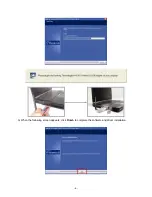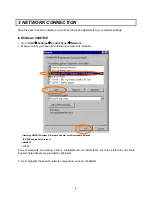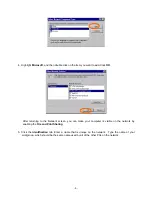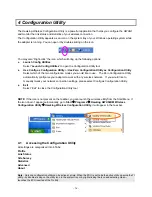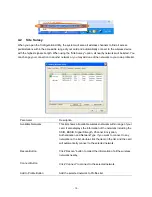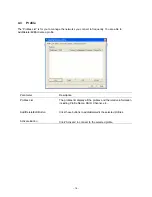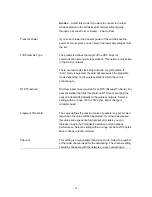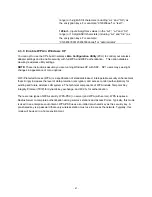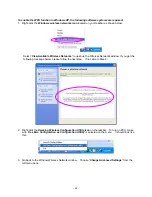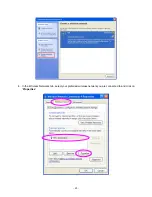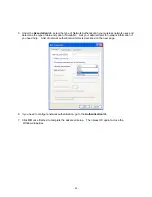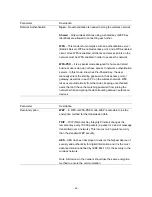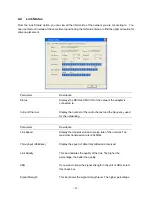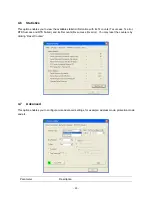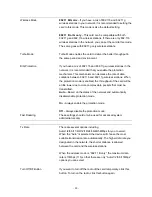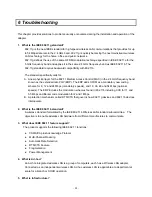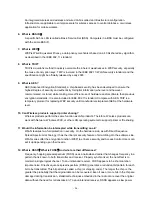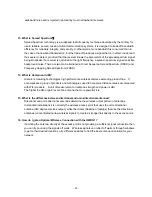
- 20 -
manually enters the starting password in their access point or
gateway, as well as in each wireless stations in the network. WPA
takes over automatically from that point, keeping unauthorized
users that don't have the matching password from joining the
network, while encrypting the data traveling between authorized
devices. The encryption methods are including TKIP and AES.
Note that this option is only available for Windows XP.
WPA2
– This mode complies with the 802.11i standard. Option
available on Windows XP computers only.
Parameter Description
Encryption Mode
None
– Disable the WEP Data Encryption.
WEP
– Enable the WEP Data Encryption. When the item is
selected, you have to continue setting the WEP Encryption keys.
TKIP
– TKIP (Temporal Key Integrity Protocol) changes the
temporal key every 10,000 packets (a packet is a kind of message
transmitted over a network.) This insures much greater security
than the standard WEP security.
AES
– AES has been developed to ensure the highest degree of
security and authenticity for digital information and it is the most
advanced solution defined by IEEE 802.11i for the security in the
wireless network.
Note: All devices in the network should use the same encryption
method to ensure the communication.
WPA Pre-Shared Key
The WPA-PSK key can be from eight to 64 characters and can be
letters or numbers. This same key must be used on all of the
wireless stations in the network.
WEP Key
(Key1 ~ Key4)
The WEP keys are used to encrypt data transmitted in the
wireless network. There are two types of key length: 64-bit and
128-bit. Select the default encryption key from Key 1 to Key 4 by
selected the radio button.
Fill the text box by following the rules below.
64-bit
– Input 10-digit Hex values (in the “A-F”, “a-f” and “0-9”
Summary of Contents for HWUG1
Page 1: ......
Page 15: ... 12 3 After selecting the component you need click Add to install ...
Page 28: ... 25 ...

